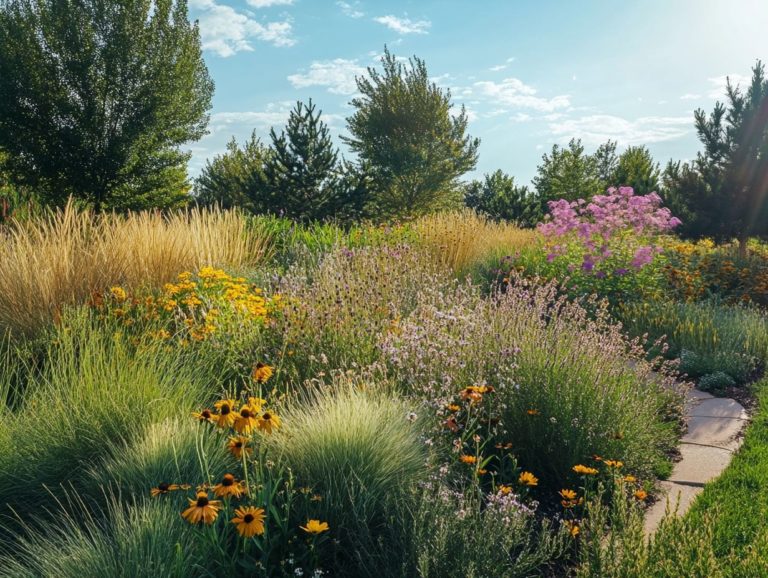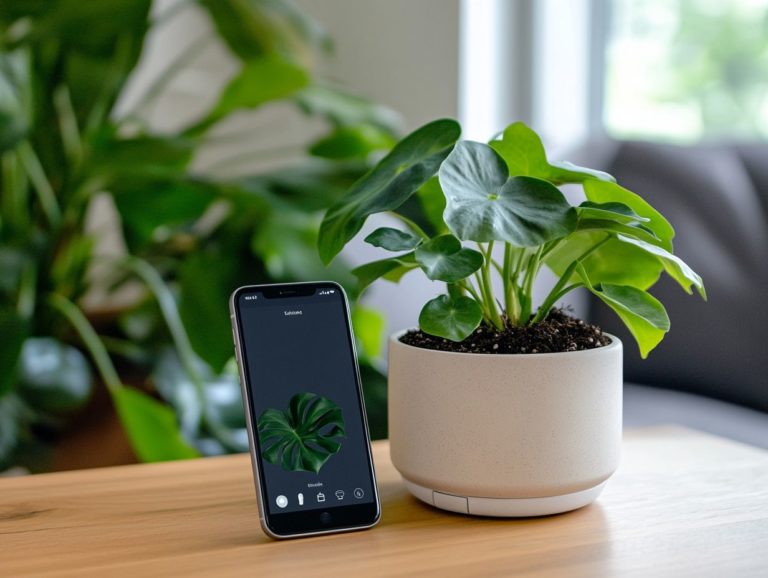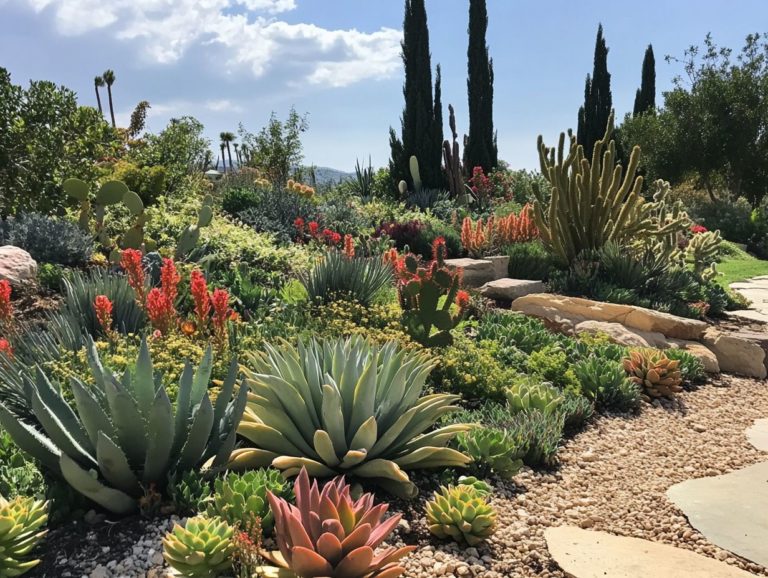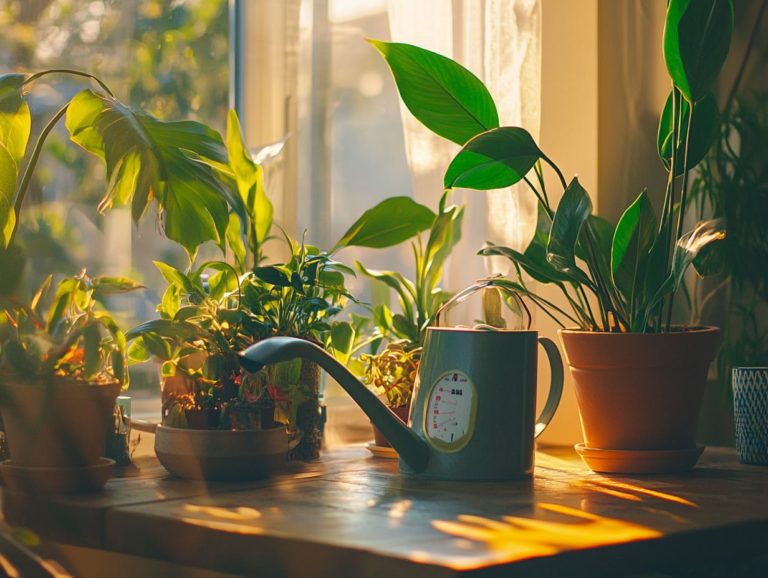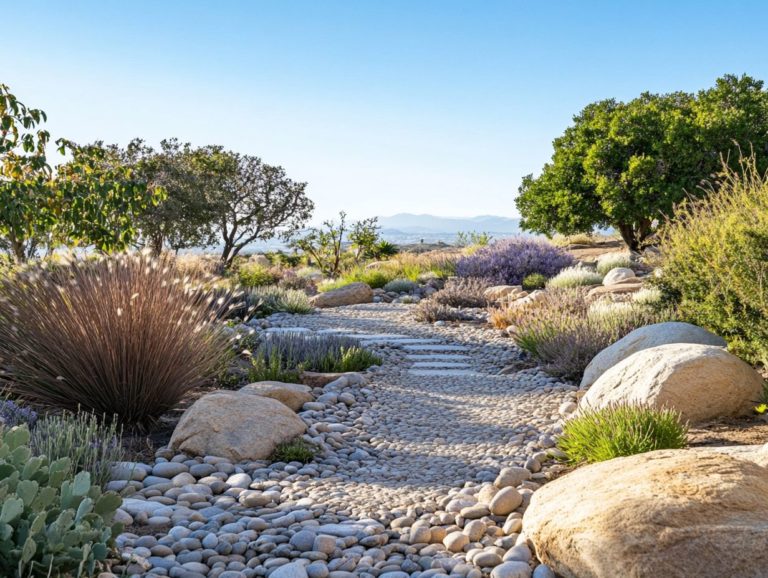Choosing the Right Potting Mix for Drought Plants
When nurturing drought-resistant plants, selecting the right potting mix is crucial and can truly make all the difference. These resilient plants have specific needs that you must meet to help them thrive in challenging conditions.
Explore the various types of potting mixes that suit drought plants and learn how to craft your own customized blend. You’ll also discover essential tips for effective watering and fertilizing. We will also point out common pitfalls to avoid, ensuring your plants not only survive but flourish.
Jump in now to discover the secrets of thriving drought plant care!
Contents
- Key Takeaways:
- The Importance of Choosing the Right Potting Mix for Drought Plants
- Types of Potting Mixes for Drought Plants
- How to Make Your Own Potting Mix for Drought-Tolerant Plants
- Tips for Using Potting Mix for Drought-Tolerant Plants
- Common Mistakes to Avoid When Choosing Potting Mix for Drought-Tolerant Plants
- Frequently Asked Questions
- What are drought plants and why do they require a special potting mix?
- What should I look for when choosing a potting mix for drought plants?
- Can I create my own potting mix for drought plants?
- What are some common mistakes to avoid when choosing a potting mix for drought plants?
- How often should I water my drought plants when using a special potting mix?
- Are there any additional tips for choosing the right potting mix for drought plants?
Key Takeaways:
- Understand the needs of drought plants before choosing a potting mix.
- Organic mixes provide better moisture retention, while inorganic mixes offer better drainage.
- Making your own potting mix for drought plants is cost-effective and customizable.
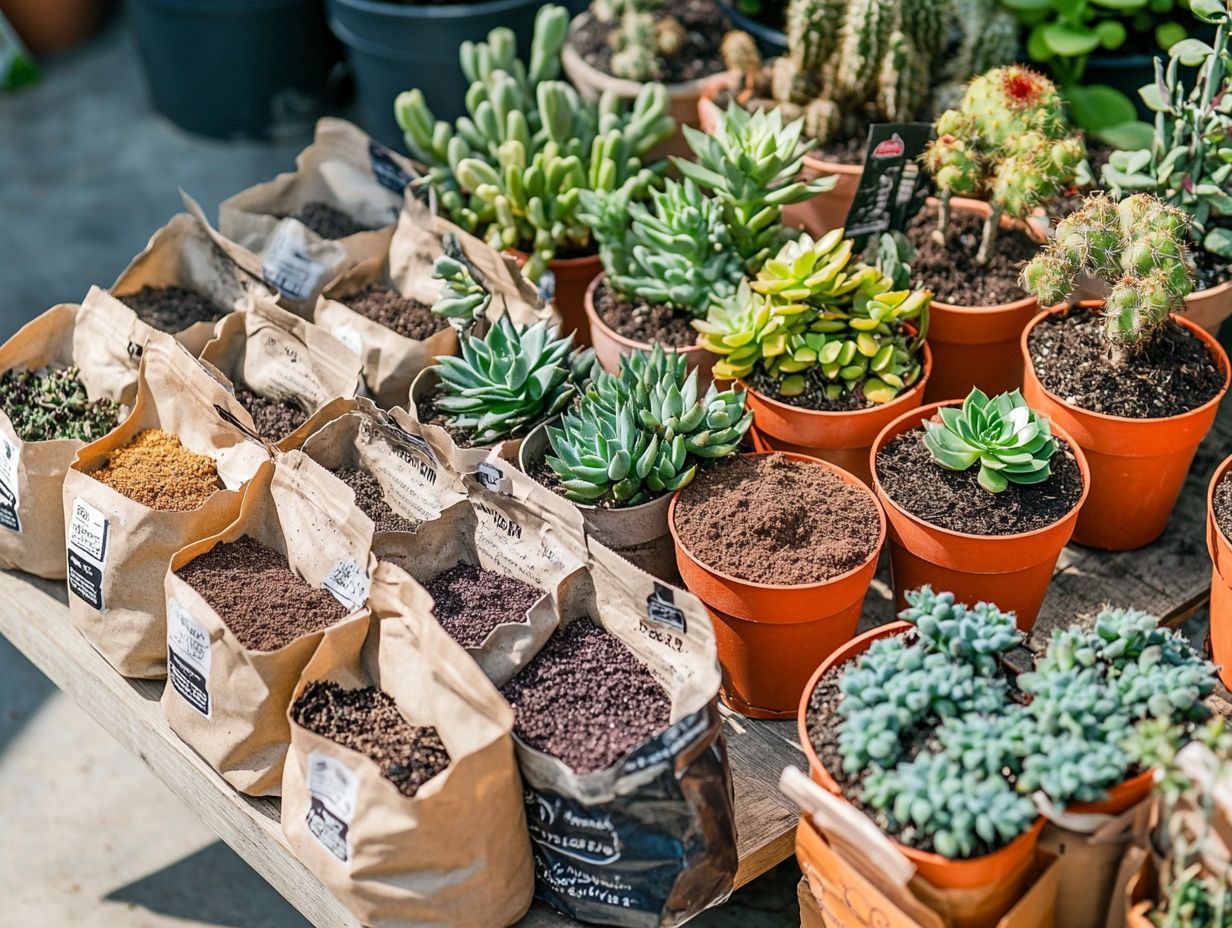
The Importance of Choosing the Right Potting Mix for Drought Plants
Selecting the ideal potting mix is essential for the health and vitality of drought-tolerant plants. For more information, consider choosing the right soil for drought gardens, as the right composition can greatly improve water retention, nutrient retention, and overall soil quality.
With many commercial products available, it’s vital to identify the characteristics that make a potting mix truly suitable for container plants thriving in low-moisture environments. Additionally, you should learn how to choose drought-resistant plants that complement your mix. Look for a blend that features components like peat moss, coir, and decomposed wood. These elements provide the necessary air circulation and drainage essential for promoting healthy growth in drought conditions.
Understanding the Needs of Drought Plants
Drought plants showcase distinctive characteristics that require a specialized approach to potting soil. Learning how to prepare soil for drought-resistant plants ensures they have the air space and nutrient retention necessary for their survival.
These resilient plants, adapted to arid environments, depend on a carefully balanced composition of potting materials that encourages effective air circulation. By incorporating ingredients like perlite, vermiculite, or coconut coir, you enhance drainage and create an environment where roots can breathe freely, effectively preventing root rot.
This consideration is crucial for container plants, which are more prone to water retention challenges. Specialty blends for varieties such as orchids flourish on a mix that includes bark or sphagnum moss. These are tailored to meet their specific moisture requirements while ensuring their roots are well-aerated.
Such thoughtful combinations can profoundly impact growth and overall vitality.
Types of Potting Mixes for Drought Plants
When selecting potting mixes for drought-resistant plants, it is essential to grasp the differences between organic and inorganic options. Each presents unique advantages and potential drawbacks, influencing the health and vitality of your plants.
Understanding these distinctions empowers you to make informed choices that best suit your gardening needs.
Organic vs. Inorganic Mixes
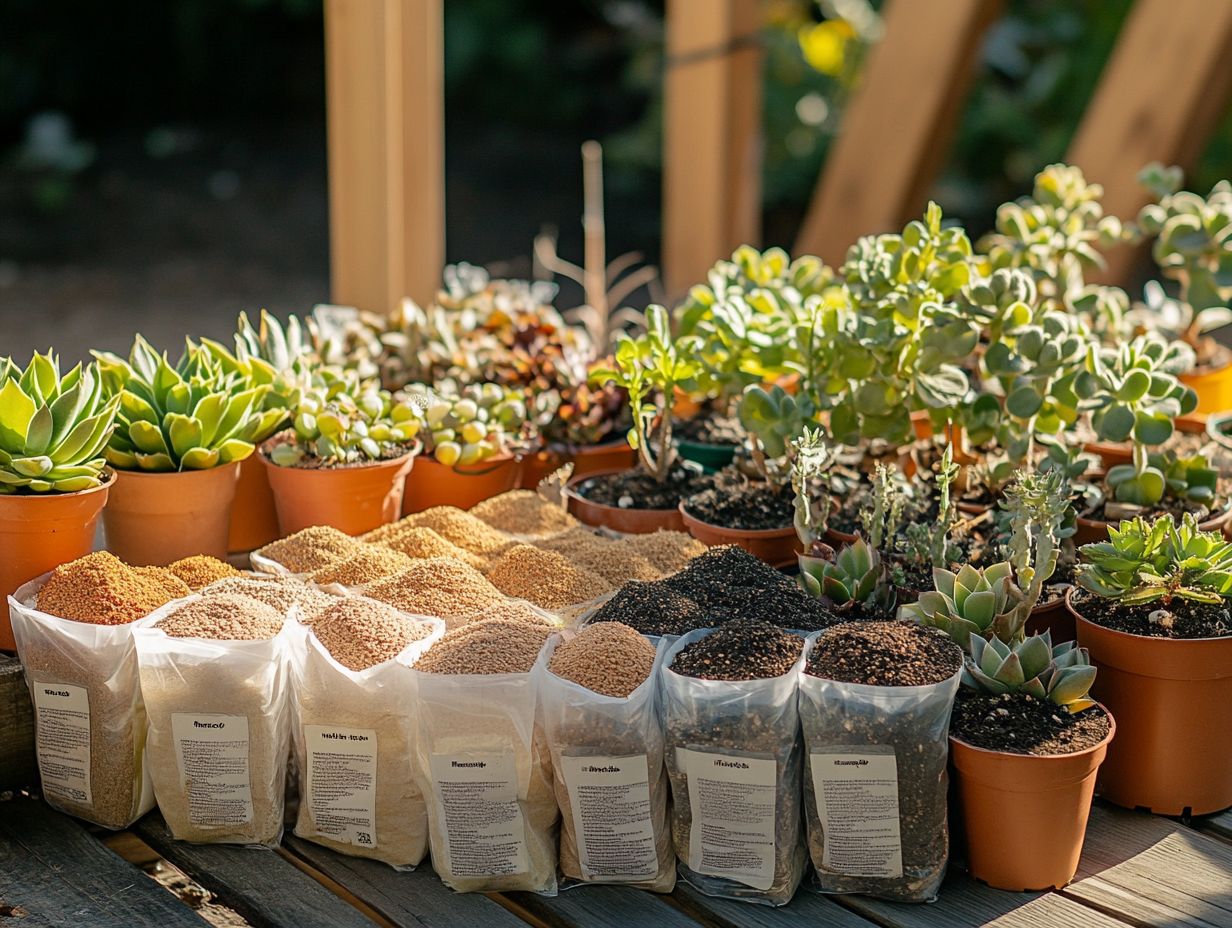
The debate between organic and inorganic potting mixes is pivotal in your gardening journey, especially when considering the environmental concerns of ingredient sourcing and sustainability.
This distinction becomes vital if you’re focused on nurturing drought-resistant plants, as it directly affects water retention and nutrient availability. Organic mixes often feature materials like coir, peat moss, and bulking agents. These excel in aeration and moisture retention. In contrast, inorganic options may include perlite or vermiculite, which enhance drainage but may lack the natural nutrients found in organic alternatives.
Both types have their passionate supporters: organic blends are celebrated for their eco-friendly credentials and positive impact on soil health, while inorganic mixes are praised for their consistency and efficient performance. By grasping these differences, you can make well-informed choices tailored to your specific plant needs and sustainability aspirations.
Start your journey toward vibrant drought-tolerant gardening today!
Best Ingredients for Drought-Tolerant Plants
For optimal growth of drought-tolerant plants, certain ingredients in potting soil truly stand out. They offer essential support for both hydration and nutrient availability.
Peat moss is a top contender, celebrated for its remarkable ability to retain moisture while expertly allowing excess water to drain away. This ensures that the roots receive just the right balance of hydration.
Coir, sourced from coconut husks, provides a similar benefit but with a sustainable twist. It enhances soil aeration and promotes a healthier root environment, making it an excellent addition to your mix.
Incorporating rotted wood is another smart move. It adds organic matter that improves drainage and nurtures beneficial microbial activity in the soil, creating a vibrant ecosystem for your container plants.
By blending these ingredients, including organic fertilizer, you can craft an ideal potting mix tailored to the specific needs of drought-tolerant species, ensuring they thrive, even in arid conditions.
How to Make Your Own Potting Mix for Drought-Tolerant Plants
Craft your own potting mix and watch your drought-tolerant plants thrive like never before! Creating a DIY potting mix designed for drought-resistant plants is immensely satisfying. It gives you the power to handpick the components, including earthworm castings, which are nutrient-rich waste products from worms that help plants grow.
DIY Recipe and Tips
A thoughtfully crafted DIY potting mix recipe for drought-resistant plants combines peat moss, coir, perlite, and organic fertilizer to create an optimal growing environment.
This mixture enhances aeration and retains moisture, essential for plants thriving in arid conditions. To achieve this ideal blend, start by combining two parts peat moss with one part coir.
Then add one part perlite or coarse sand to improve drainage and boost air circulation around the roots. Incorporate a handful of organic fertilizer to supply vital nutrients, ensuring your plants can thrive even with limited water.
For added customization, think about mixing in elements like shredded bark for improved texture or compost for an extra nutrient boost. Understanding the role of each component in this DIY mix enhances the resilience of your drought-tolerant varieties, allowing them to flourish even in challenging environments.
Tips for Using Potting Mix for Drought-Tolerant Plants
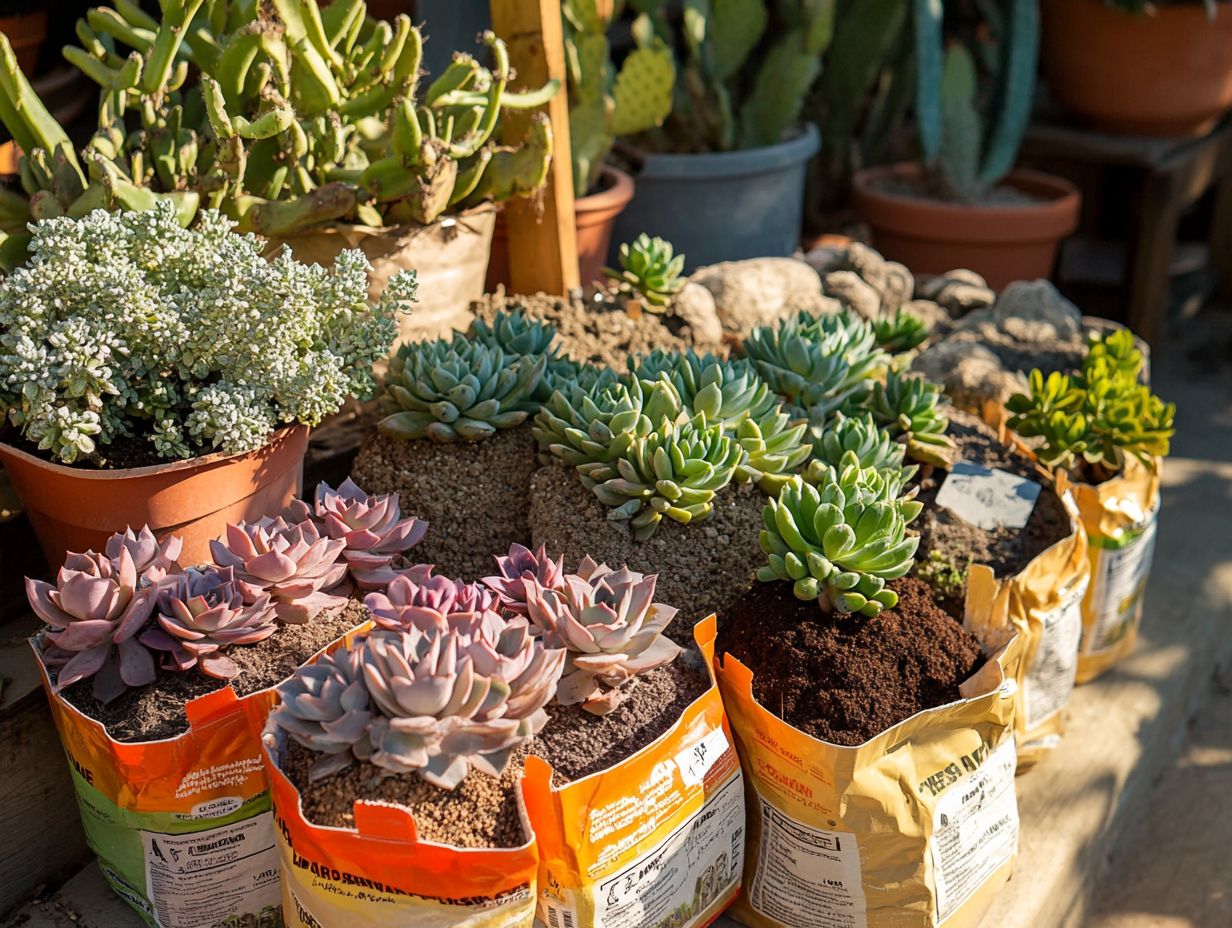
Utilizing potting mix effectively for drought-tolerant plants demands a refined approach to both watering and fertilization techniques. By mastering these methods, you can ensure that your plants not only survive but flourish even in low-moisture conditions.
Watering and Fertilizing Techniques
Effective watering and fertilizing techniques are crucial for maintaining the health of drought-tolerant plants in potting soil. It s all about striking that perfect balance between hydration and nutrient delivery.
These plants, often adapted to arid environments, have specific needs that vary based on their individual requirements and the conditions around them. Use methods like drip irrigation, moisture sensors, or black soil to ensure that water is delivered precisely when and where it s needed, avoiding the pitfalls of drought stress or over-saturation.
Incorporating organic fertilizers is equally important as it provides essential nutrients that support the overall health of your plants. By customizing your fertilization strategy to meet each plant s unique needs, you can optimize their growth and resilience, enabling them to thrive even when the conditions aren t exactly perfect.
Common Mistakes to Avoid When Choosing Potting Mix for Drought-Tolerant Plants
Selecting an inappropriate potting mix for drought-resistant plants can have serious repercussions. To prevent common missteps, it’s important to know about the best drought-resistant plants for containers that thrive in such conditions.
Discover the best potting mix techniques for your drought-tolerant plants!
Problems and Solutions
Addressing common issues with potting mix for drought-tolerant plants, including marketing claims, requires a keen understanding of the underlying problems and implementing effective solutions.
For example, poor drainage can lead to root rot. Insufficient nutrient retention may leave your plants struggling during dry spells. These challenges often stem from using subpar ingredients or incorrect mix ratios. Choose high-quality components like drainage holes, perlite, or coarse sand to improve drainage.
Incorporate organic matter such as compost to enhance nutrient retention and nurture a healthier microbial environment. Choose the right mix, and watch your plants thrive!
Frequently Asked Questions
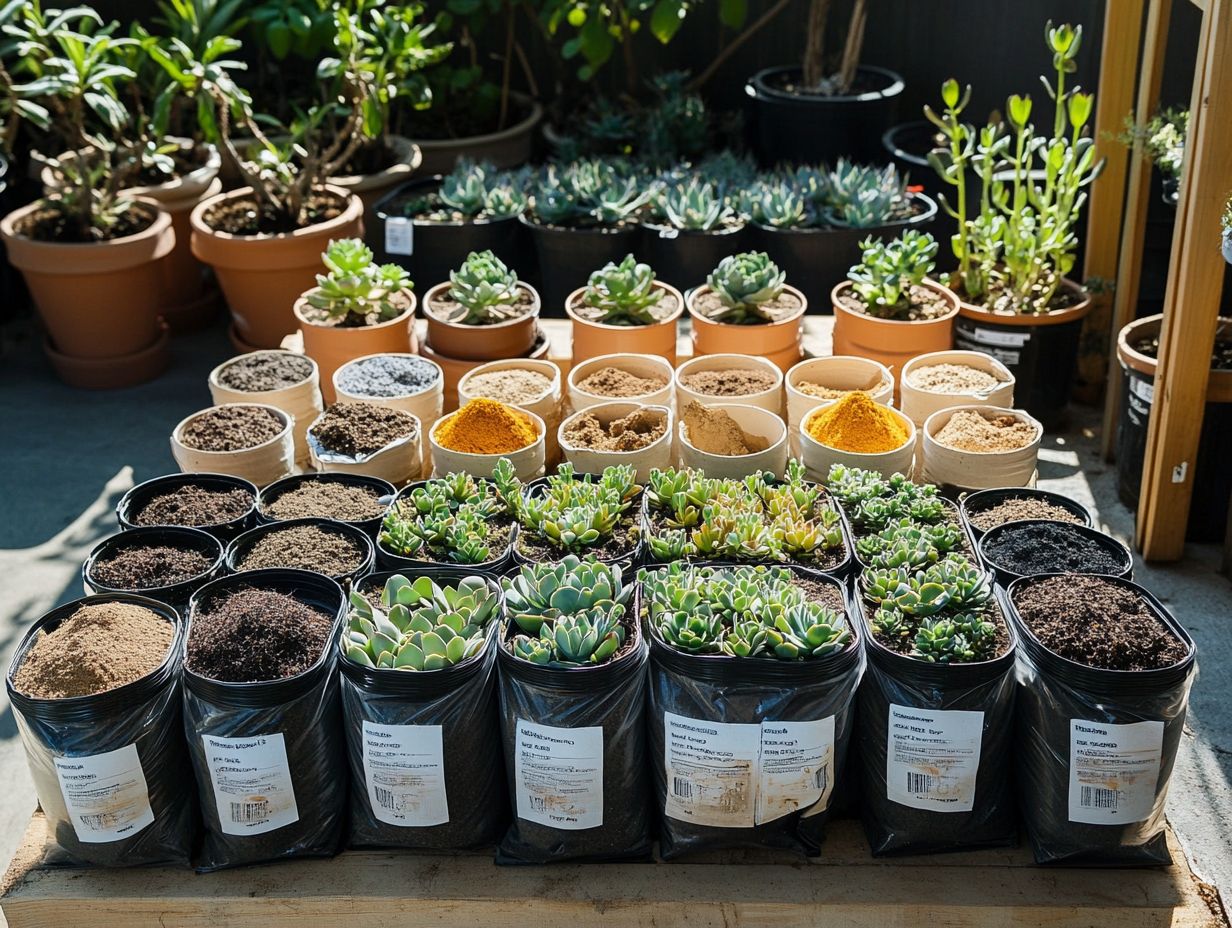
What are drought plants and why do they require a special potting mix?
Drought plants are capable of surviving and thriving in dry and arid conditions. They need a special potting mix because regular potting soil may retain too much moisture, leading to root rot and other issues.
What should I look for when choosing a potting mix for drought plants?
Look for potting mixes specifically labeled for drought plants. They should contain materials that assist with water drainage and retention, such as perlite, vermiculite, and peat moss. Additionally, understanding how to choose drought-resistant plants can further enhance your gardening success.
Can I create my own potting mix for drought plants?
Yes! You can create your own potting mix by mixing equal parts of peat moss, perlite, and coarse sand. This combination helps with water drainage and retention while providing necessary nutrients.
What are some common mistakes to avoid when choosing a potting mix for drought plants?
Avoid using regular potting soil, not researching the specific needs of your drought plants, and neglecting to check the ingredients list. These mistakes can hinder plant growth.
How often should I water my drought plants when using a special potting mix?
The frequency of watering will depend on the specific needs of your drought plants and the type of potting mix. Generally, these plants require less frequent watering, but it s essential to monitor soil moisture and water when needed.
Are there any additional tips for choosing the right potting mix for drought plants?
Choose a potting mix suitable for the size of your container and the type of drought plant. Additionally, consider selecting suitable mulch for drought plants and check the pH level, as some drought plants prefer more acidic or alkaline soil.

